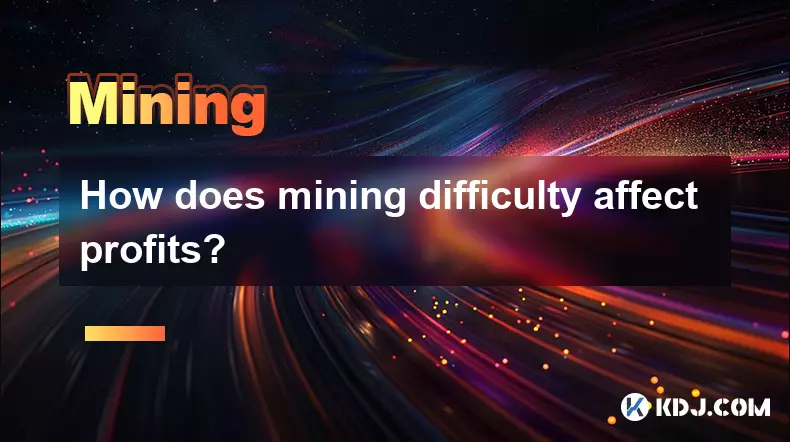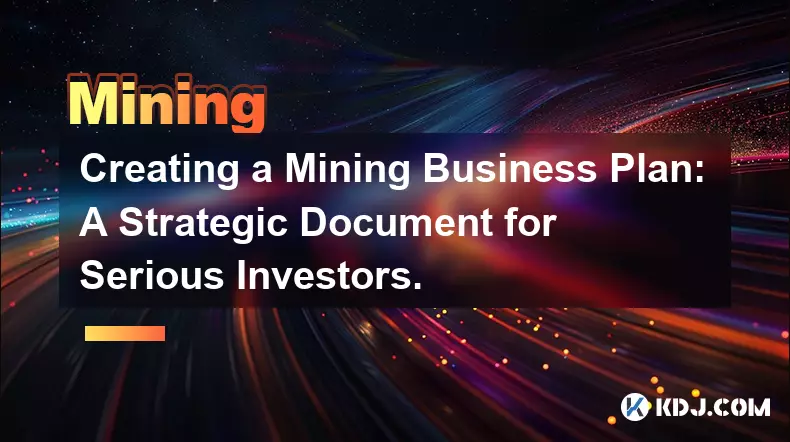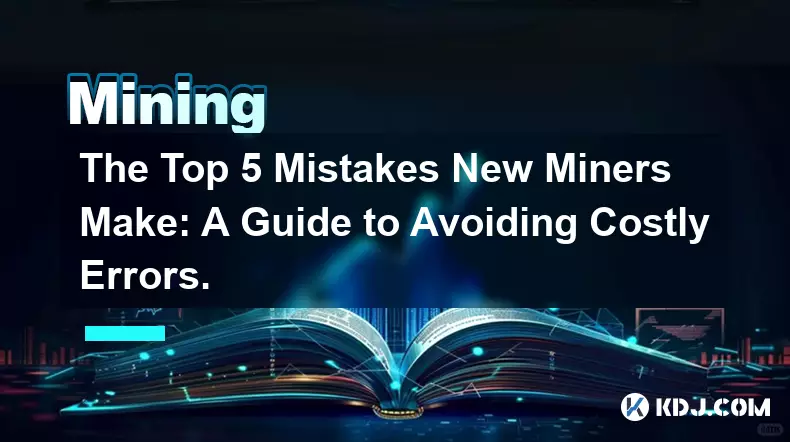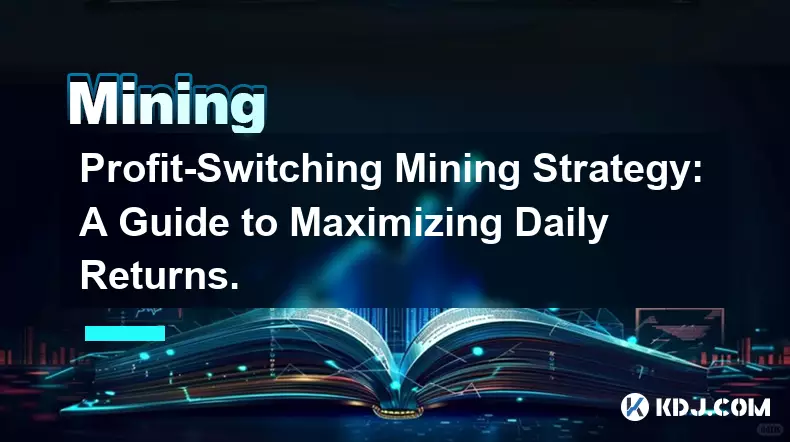-
 bitcoin
bitcoin $99177.955738 USD
-7.32% -
 ethereum
ethereum $3187.183061 USD
-12.38% -
 tether
tether $0.999809 USD
0.00% -
 xrp
xrp $2.117933 USD
-9.42% -
 bnb
bnb $906.710033 USD
-9.17% -
 solana
solana $149.367737 USD
-10.74% -
 usd-coin
usd-coin $0.999816 USD
0.01% -
 tron
tron $0.281498 USD
-0.38% -
 dogecoin
dogecoin $0.156292 USD
-8.00% -
 cardano
cardano $0.500744 USD
-10.19% -
 hyperliquid
hyperliquid $38.087358 USD
-4.58% -
 chainlink
chainlink $14.097831 USD
-8.54% -
 bitcoin-cash
bitcoin-cash $463.329916 USD
-9.22% -
 ethena-usde
ethena-usde $0.999078 USD
-0.01% -
 unus-sed-leo
unus-sed-leo $9.475862 USD
-0.79%
How does mining difficulty affect profits?
Mining difficulty directly impacts profitability by increasing hardware and energy costs, reducing reward frequency, and pressuring miners to upgrade constantly to stay competitive.
Nov 01, 2025 at 06:01 am

Mining Difficulty and Its Direct Influence on Profitability
1. As mining difficulty increases, the computational power required to solve blocks rises proportionally. This means miners must invest in more advanced hardware to remain competitive, directly increasing operational costs.
2. Higher difficulty leads to longer solving times for individual miners or smaller pools. Even with consistent hash rate output, rewards become less frequent, reducing short-term income streams.
3. Energy consumption remains a constant burden. When difficulty climbs without a corresponding rise in cryptocurrency value, electricity expenses can surpass block rewards, turning profitable operations into loss-making ones.
4. Network congestion caused by high competition does not affect transaction fees alone but also delays confirmation times. Miners relying on fee-based income may see fluctuations due to inconsistent block discovery intervals.
5. Difficulty adjustments act as a regulatory mechanism within proof-of-work systems. These periodic recalibrations ensure block production stays stable, but they also pressure miners to continuously upgrade infrastructure just to maintain previous earnings levels.
Hardware Efficiency in High-Difficulty Environments
1. Older ASIC models lose relevance quickly when difficulty spikes. Units like the Antminer S9, once dominant, now struggle to cover power costs under current network conditions.
2. Efficiency is measured in joules per terahash (J/TH). Modern rigs such as the Antminer S19 XP achieve lower energy expenditure per unit of work, allowing them to remain profitable even during difficulty surges.
3. Cooling and maintenance demands grow alongside processing power. Facilities housing high-density mining setups face additional overhead from ventilation, structural reinforcement, and technical support.
4. Scalability depends on access to low-cost energy. Locations near hydroelectric plants or regions with subsidized industrial power offer a strategic edge when competing against global peers under elevated difficulty.
5. Overclocking can temporarily boost performance, but it accelerates hardware degradation. The trade-off between immediate gains and equipment lifespan becomes critical when difficulty remains high over extended periods.
Market Volatility and Block Reward Dynamics
1. A spike in mining difficulty coinciding with stagnant or declining coin prices creates a double squeeze on profitability. Revenue fails to keep pace with rising input costs.
Miners must closely monitor both network hashrate trends and exchange rates to adjust operations swiftly.2. Halving events reduce base block rewards, compounding the impact of increased difficulty. After each Bitcoin halving, weaker participants often exit the network due to unsustainable margins.
3. Some altcoins implement dynamic difficulty algorithms that respond faster than Bitcoin’s bi-weekly adjustment. This allows for quicker adaptation but introduces unpredictability in daily earnings.
4. Pool hopping strategies emerge during volatility peaks. Miners shift between pools offering better payout structures or lower thresholds, attempting to maximize returns despite external constraints.
5. Long-term sustainability hinges on forward-looking financial modeling. Operators who project difficulty growth, electricity inflation, and hardware depreciation are better positioned to endure market downturns.
Frequently Asked Questions
What causes mining difficulty to increase?Mining difficulty rises when more computational power joins the network. As miners add hardware or new participants enter, the total hashrate climbs, prompting the protocol to adjust difficulty upward to maintain consistent block generation intervals.
Can mining still be profitable during high difficulty periods?Yes, profitability is possible with efficient equipment, low electricity costs, and proper scale. Large-scale operations in favorable jurisdictions often sustain profits where individual miners cannot compete.
How often does Bitcoin adjust its mining difficulty?Bitcoin recalculates mining difficulty approximately every 2016 blocks, which occurs about every two weeks. The adjustment ensures that average block time remains close to ten minutes regardless of hashrate changes.
Do all cryptocurrencies have mining difficulty?Not all do. Proof-of-stake and other consensus mechanisms eliminate traditional mining. Among proof-of-work coins, most use some form of difficulty adjustment to regulate block creation speed and preserve network stability.
Disclaimer:info@kdj.com
The information provided is not trading advice. kdj.com does not assume any responsibility for any investments made based on the information provided in this article. Cryptocurrencies are highly volatile and it is highly recommended that you invest with caution after thorough research!
If you believe that the content used on this website infringes your copyright, please contact us immediately (info@kdj.com) and we will delete it promptly.
- Bitcoin's Wild Ride: Saylor, Kiyosaki, and the Quest for $200K
- 2025-11-05 10:50:13
- Culex, Cardano, and Aster: A Crypto Cocktail of Mosquitoes, Dips, and CZ Fuel
- 2025-11-05 11:00:17
- Crypto Presales, Coin Growth, and Established Coins: Navigating the 2025 Buzz
- 2025-11-05 11:00:17
- La Culex, Crypto Investment, and Pudgy Penguins: A NYC Perspective
- 2025-11-05 10:30:13
- Zcash Defies Crypto Crash: Reversal Risk on the Horizon?
- 2025-11-05 11:00:01
- Score Big with BetMGM: NBA, NFL, and the TOP150 Bonus Code
- 2025-11-05 08:50:13
Related knowledge

Mining Hardware Longevity Guide: Essential Tips to Make Your GPUs Last.
Nov 01,2025 at 04:00pm
Mining Hardware Longevity Guide: Essential Tips to Make Your GPUs LastAs cryptocurrency mining continues to attract both hobbyists and professionals, ...

Creating a Mining Business Plan: A Strategic Document for Serious Investors.
Nov 04,2025 at 08:54pm
Defining the Core Objectives of a Cryptocurrency Mining Venture1. Establishing a clear mission for the mining operation ensures alignment with investo...

The Top 5 Mistakes New Miners Make: A Guide to Avoiding Costly Errors.
Nov 01,2025 at 10:18am
The Top 5 Mistakes New Miners Make: A Guide to Avoiding Costly Errors Entering the world of cryptocurrency mining can be both exciting and overwhelmin...

The Miner's Guide to Market Cycles: When to Hold and When to Sell.
Nov 03,2025 at 07:55pm
The Miner's Guide to Market Cycles: When to Hold and When to Sell Bitcoin mining has evolved from a hobbyist pursuit into a highly competitive, capita...

Profit-Switching Mining Strategy: A Guide to Maximizing Daily Returns.
Nov 03,2025 at 11:55am
Understanding Profit-Switching in Cryptocurrency Mining1. Profit-switching is a dynamic mining strategy that automatically redirects computational pow...

Setting Up Mining Alerts: A Guide to Monitoring Your Rigs 24/7.
Nov 03,2025 at 02:54pm
Why Continuous Monitoring Is Crucial in Cryptocurrency Mining1. Cryptocurrency mining operations rely heavily on hardware stability and network connec...

Mining Hardware Longevity Guide: Essential Tips to Make Your GPUs Last.
Nov 01,2025 at 04:00pm
Mining Hardware Longevity Guide: Essential Tips to Make Your GPUs LastAs cryptocurrency mining continues to attract both hobbyists and professionals, ...

Creating a Mining Business Plan: A Strategic Document for Serious Investors.
Nov 04,2025 at 08:54pm
Defining the Core Objectives of a Cryptocurrency Mining Venture1. Establishing a clear mission for the mining operation ensures alignment with investo...

The Top 5 Mistakes New Miners Make: A Guide to Avoiding Costly Errors.
Nov 01,2025 at 10:18am
The Top 5 Mistakes New Miners Make: A Guide to Avoiding Costly Errors Entering the world of cryptocurrency mining can be both exciting and overwhelmin...

The Miner's Guide to Market Cycles: When to Hold and When to Sell.
Nov 03,2025 at 07:55pm
The Miner's Guide to Market Cycles: When to Hold and When to Sell Bitcoin mining has evolved from a hobbyist pursuit into a highly competitive, capita...

Profit-Switching Mining Strategy: A Guide to Maximizing Daily Returns.
Nov 03,2025 at 11:55am
Understanding Profit-Switching in Cryptocurrency Mining1. Profit-switching is a dynamic mining strategy that automatically redirects computational pow...

Setting Up Mining Alerts: A Guide to Monitoring Your Rigs 24/7.
Nov 03,2025 at 02:54pm
Why Continuous Monitoring Is Crucial in Cryptocurrency Mining1. Cryptocurrency mining operations rely heavily on hardware stability and network connec...
See all articles










































































